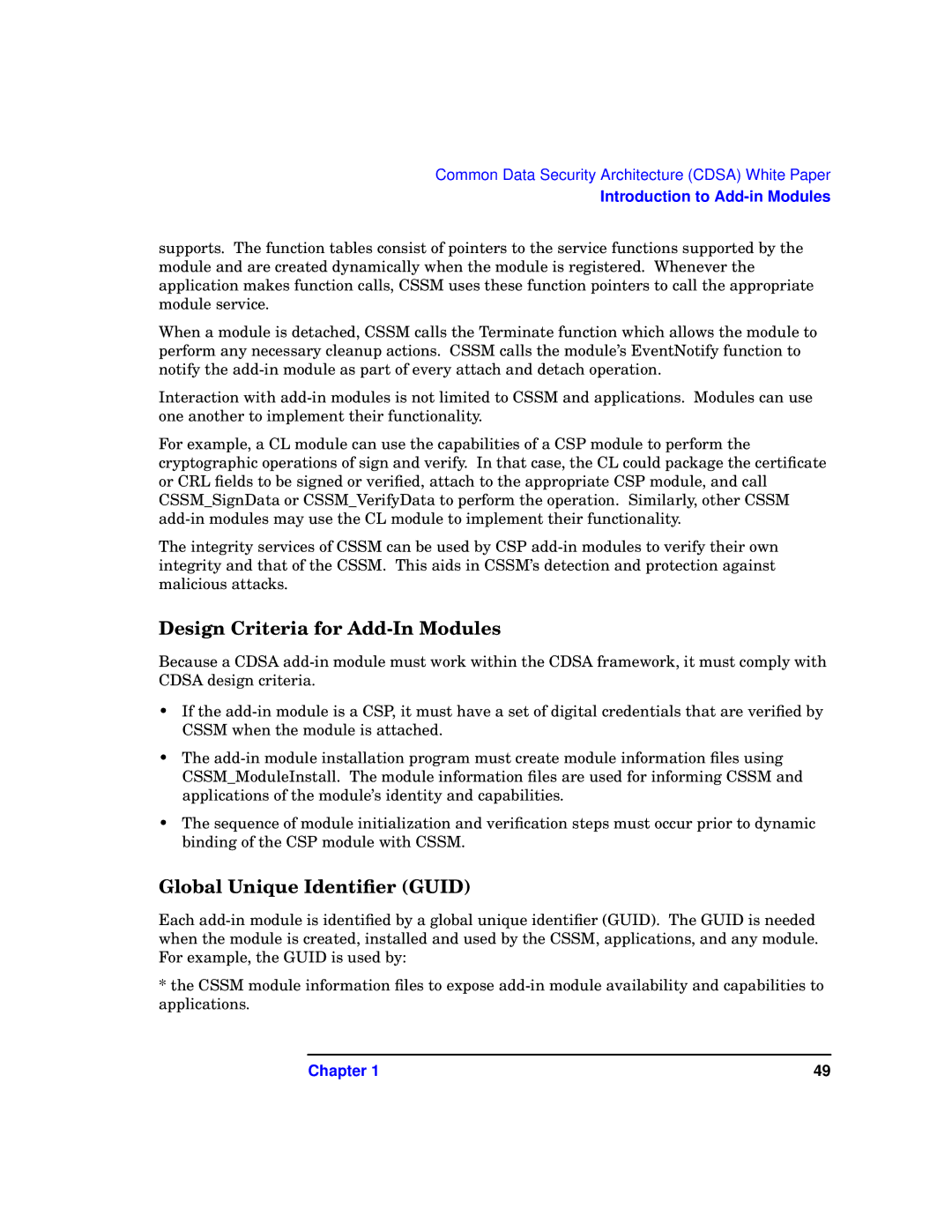Common Data Security Architecture (CDSA) White Paper
Introduction to Add-in Modules
supports. The function tables consist of pointers to the service functions supported by the module and are created dynamically when the module is registered. Whenever the application makes function calls, CSSM uses these function pointers to call the appropriate module service.
When a module is detached, CSSM calls the Terminate function which allows the module to perform any necessary cleanup actions. CSSM calls the module’s EventNotify function to notify the
Interaction with
For example, a CL module can use the capabilities of a CSP module to perform the cryptographic operations of sign and verify. In that case, the CL could package the certificate or CRL fields to be signed or verified, attach to the appropriate CSP module, and call CSSM_SignData or CSSM_VerifyData to perform the operation. Similarly, other CSSM
The integrity services of CSSM can be used by CSP
Design Criteria for Add-In Modules
Because a CDSA
•If the
•The
•The sequence of module initialization and verification steps must occur prior to dynamic binding of the CSP module with CSSM.
Global Unique Identifier (GUID)
Each
*the CSSM module information files to expose
Chapter 1 | 49 |
